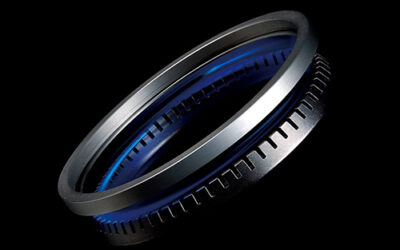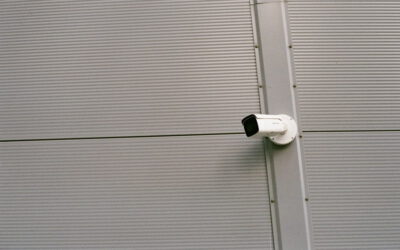What Are Head-Mounted Displays?

Head-mounted display (HMD) is a virtual reality technology becoming increasingly widespread and accessible. You have probably seen HMD helmets in sci-fi movies, but their real-life application is also on the rise. VR helmets are used in gaming, medicine, engineering, and other areas. These devices can potentially be used in various day-to-day human activities, as their technical abilities are limitless.
Let’s begin by answering the main questions, such as “What is head mounted display in virtual reality?” and “what does HMD stand for?” HMD is a technology embedded into specialized equipment worn on the head as goggles. Head-mounted displays can project the visual information either on the goggles or directly on the user’s retina. This technology offers users a high sense of presence and immersion, thus providing unprecedented visual experiences. HMDs’ characteristics are thus particularly valuable for the entertainment industry, medical research, engineering, aviation, and sports.
Although it may seem that HMDs are a brand-new technology, they were designed many decades ago. In the 1960s, Morton Heilig patented the first HMD, which he called the Telesphere Mask. Several years later, Ivan Sutherland and Bob Sproull developed another VR system that became the prototype of all modern VR helmets.
In the 1970s-1980s, advances in optical technology allowed combining HMDs with various haptic devices to enhance users’ experience in the virtual space. NASA was one of the key actors contributing to the research and testing of these systems. For the past few decades, HMD has evolved dramatically, allowing researchers to create various HMD-based systems, such as heads-up display technology, augmented reality, collaborative VR, etc.

Sphere of Application
Modern-day HMDs are sophisticated, efficient devices that can be adjusted to meet different industries’ needs. For example, the possibilities provided by stereoscopic 3D imagery allowed designing 3D games and entertainment apps. Many large tech companies such as Sony, Windows, PlayStation, and others have already harnessed this technology to develop VR simulations and video games. HMDs used in gaming are equipped with rotational tracking and positional tracking, allowing the system to detect gamers’ movement and adjust the visual content accordingly.
In sports, a helmet mounted display allows Formula One drivers to focus on the track while simultaneously receiving essential data. Athletes also take advantage of HMD in virtual reality to train. HMDs are useful when training in real-life is impossible or dangerous, but their characteristics are to be improved further to eliminate unwanted symptoms such as nausea or dizziness.
Medicine is another promising area of HMD use. VR displays were found to be useful for rehabilitation. Patients with spinal cord injuries, stroke, multiple sclerosis, Parkinson’s disease, and other conditions use HMDs to perform various functional tasks, thus developing their motor skills. Helmets can also be helpful during surgeries, as they allow surgeons to see all vital information without distracting themselves from the process. HMDs are also suitable for medical training, as they help future doctors to perform operations without involving actual patients.

Other spheres have also taken advantage of VR helmets. For instance, engineers use HMDs to interact with 3D designs and maintain complex systems. In the military sector, HMDs can be used to communicate vital information during combat operations or train soldiers. In other words, this technology is invaluable for activities that require timely access to data and safe and effective simulations.
What Is the Function of Head Mounted Display?
It might be relevant to dwell more on the characteristics of HMDs and the functions they perform. An HMD comprises a wearable heads-up display, a VE, and relay optics. A typical head-mounted display in virtual reality also includes a head (rotational) tracking system that collects information about the user’s head orientation. Positional tracking, in turn, involves the use of sensors to identify the user’s location. The following display characteristics should also be noted:
- update relay
- field of view (FOV)
- refresh rate
- stereoscopic vision
The latter feature also referred to as stereoscopic 3D imagery, creates an illusion of the 3D environment. All these characteristics create the vital sense of presence and immersion that underpins the whole idea of VR HMD. It is expected that HMDs will also include eye-tracking technology to simulate natural vision more accurately in the future.
HMDs can be transparent, semi-transparent, and non-transparent. A virtual reality transparent HMDs equipped with a holographic visor allows users to interact with virtual and natural environments. However, this type of HMDs, similar to the semi-transparent one, may create perceptual challenges due to visual confusion and distraction. These devices can also work in conjunction with headphones, allowing the sound to create a believable 3D world.
Types of HMDs
HMDs differ based on their complexity and characteristics. There are two groups of virtual reality head mounted display technology, which differ by the nature of displayed imagery. The first group can only display images created by the computer (VR). The second group consisting of transparent and semi-transparent devices, can deliver both computer-generated visual information and the real-world view. This combination is called augmented or mixed reality.
Researchers also differentiate between slide-on, discrete, and integrated HMDs. Slide-on and discreet systems depend fully or partly on the computer. In other words, they cannot be used in isolation from the primary hardware. Integrated systems, in turn, are the most advanced and sophisticated. These are independent devices with complex head mounted display optics that allow for the most outstanding VR experience.

How Does Head-Mounted VR Display Work?
Headmounted displays rely on innovative technology. Let’s use the example of the famous CAVE system, which is one of the most advanced HMD technologies on the market. A person wearing a LED screen helmet sees the images projected on the screens. These images are in a stereoscopic format and alternate quickly to provide a sense of immersion. Users’ goggles, in turn, open and shut the lenses simultaneously with the changing visual images, providing an additional sense of depth. Tracking devices in the system tell the computer how to adjust the images based on the user’s movement. A controller can even allow them to interact with the virtual environment and personalize their experiences. Thus, unlike non-wearable systems such as vive mirrors, the CAVE technology offers an unprecedented level of immersion.
Head-Mounted VR Display Apps
Systems using a helmet mounted display have immense commercial potential. Many tech companies have already recognized this potential and developed apps to facilitate the widespread use of HMDs. Here’s a list of some of the most popular and promising apps for head-mounted VR displays:
- Google Cardboard
- VRSE
- Orbulus
- Daydream
- NYT VR
- InCell VR
- Jaunt VR
- Seene
- Hyper Vision VR app
While some of these apps belong to large corporations such as Google, others have been developed by small tech companies. The ADUK team can help you enter this booming market and design your own app for HMD. ADUK experts have vast experience designing complex systems for different industries, so they are well-aware of the latest trends and market demands.
Conclusion
Headmount displays are taking over the tech world. If you want to harness the power of this technology, https://aduk.de will help you design functional, customer-friendly apps for HMD VR. The ADUK team develops various software from scratch and is ready to meet the highest customer expectations.
Recent Posts
- What Is an Exoskeleton Suit?
- Where can you use an ultrasonic motor?
- Smart Camera: System That You Can Use for a Wide Variety of Purposes
- Why Is the Smart Toothbrush Better Than a Regular One?
- Microcontrollers: An Integral Part of Embedded Hardware
- Air Quality Monitoring System: Why It’s So Important in Modern Realities





